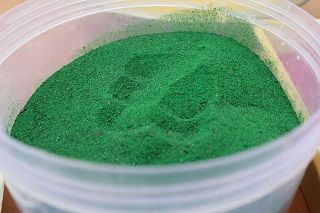From Guest Blgger Hosokawa: Calculate the Energy Savings in Processing Technologies

- Why have 3 machines when 1 will do? When you can save investment costs on 3 separate machines and eliminate labour intensive double handling of products and streamline operations too. Take for example the 3 in 1 Drymeister-H, the multiprocessing unit from Hosokawa Micron that offers energy efficient and speedy grinding, classifying and drying operations in one compact unit. When compared to traditional spray or rotary dryers, the Drymeister-H offers processors energy savings of 50-70%.
The Drymeister-H combines intensive dispersion with high performance classification to deliver stable product quality, particle size and moisture content and is applicable for drying slurries, solutions, wet powder and pasty cake, giving speedy and reliable results.
- Understanding your plant is key to making changes that improve energy efficiency and overall performance. Often the data needed to make informed decisions on energy savings is already produced and recorded. It is just a case of using the data to better understand your plant and how changes can impact positively to achieve your aims.
Performance Improvement Services can do this and is best demonstrated by this example:
The company, Cleveland Potash is a chemical processor producing refined potassium chloride for use mainly in the manufacture of fertilisers. The processes at the Cleveland Potash site were very energy intensive, requiring some 25 MW of power and using over 20,000 tonnes a year of heavy fuel oil. The company were keen to improve energy efficiency both as a means of reducing costs and also because of the environmental impact. Using the latest equipment and software to monitor the company’s rotary kiln driers and analyse performance, Hosokawa Micron has established optimum equipment operating conditions to minimize energy cost whilst still meeting production and quality targets.
Results:
Energy cost savings of £47,000 pa on Dryer B
Projected energy cost savings of £110,000 pa on Dryers A and C
- Never under estimate the obvious! Poorly maintained mechanical equipment may well be costing you dearly by using more energy than it should, as well as wasting time with poor overall performance. Make sure your equipment is maintained by Original Equipment Manufacturers’ engineers dedicated to getting the best out of each unit and your whole system.
- Whilst buying new equipment may sound like counter-productive to energy and cost savings, new machines designed for energy efficiency may quickly pay for themselves and deliver a rapid return on investment.
Stewart Bryan is the Business Team Manager/Commercial Manager at Hosokawa Micron Ltd and is involved with the ongoing development of Hosokawa’s containment equipment portfolio and the advancement of remote monitoring and performance improvement solutions across a range of processing industries. His experience spans the range of powder processing technologies including mixing, milling and drying.

Rotary drying is indeed an energy extensive process. After all, the inner temperature could be as up as 600-800 centigrade degree. A rotary dryer is very big in volume, from dia 0.8m, length 8m to dia 3m, length 35m. Its surface exposes to atmosphere directly. That’s where ennergy is wasted a lot. So, a triple pass dryer is much higher than single drum dryer in the energy efficiency comparison. http://www.rotarydryer.org/